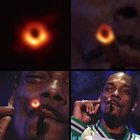my subs
AntiwarAskSaidItbitcoinbookscensorshipCollusioncomedyComedyMusicComicsconspiracycorruptioncryptocurrencyDecentralizeAllThingsDocumentariesdogecoinDownTheMemoryHoledreamsEarthEntertainmentenvironmentEuropefinancefunnyGaminggifshelphistoryInternetIntroductionsLateStageCapitalismLinuxmapsMeanwhileOnRedditMeanwhileOnVoatMediaAnalysismemesMoviesmusicMusicVideosnewsNotTheOnionoffbeatPhysicspicspiracyPoliceMisconductpoliticsProgrammerHumorprogrammingpropagandaquotesRothschildsSaidItSaiditCanaryScienceFictionSocialMediaspaceTechCompaniestechnologyTechSecTILvideosWarWatchWatchRedditDiewhateverWikiLeaksWorldNewsWorldPoliticsedit subscriptionsfind popular subsfind new subs



[–]zyxzevn[S] 2 insightful - 1 fun2 insightful - 0 fun3 insightful - 0 fun3 insightful - 1 fun - (0 children)